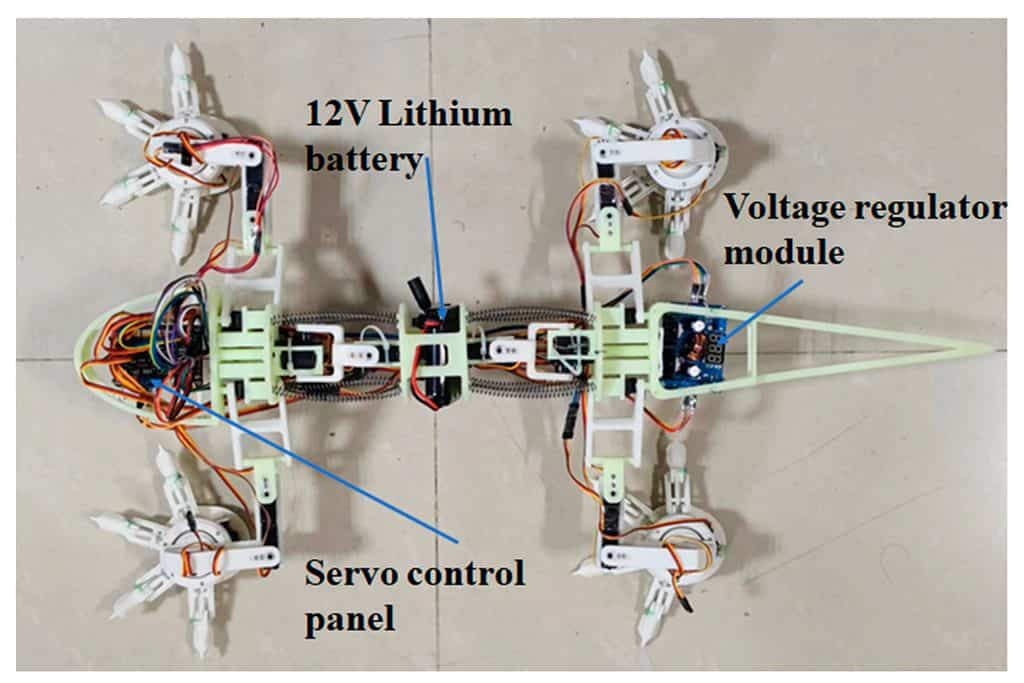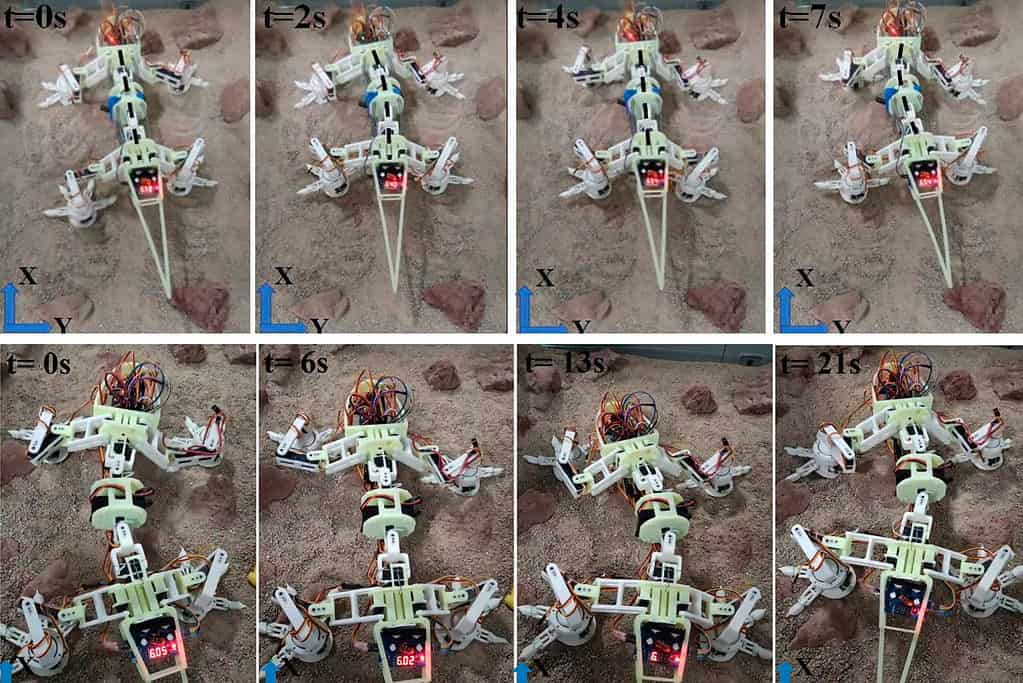Although we humans claim a goal to build a colony on Mars “someday”, we haven’t been able to build a single road there to this date. There are craters, boulders, and volcanoes all over the martian surface, making it very difficult to explore the red planet even for the rovers — not to mention the whole not having an atmosphere thing.
But a new, lizard-ish robot could be unexpectedly helpful in this regard.

This four-legged robot is developed by a team of researchers from the Nanjing University of Aeronautics and Astronautics (NUAA). It is made up of a 3D-printed resin material and is capable of mimicking the movement and “creeping” locomotion style of a desert lizard. The researchers argue that both rovers and legged walking robots often find it challenging to get through the soft granular soil and rocky terrain of Mars. This is where the lizard robot could outperform them.
“Wheeled rovers may encounter severe sinkage and embedding in very soft weak soils. But the wheels can suffer from a high slip from the soft soils. This (lizard) robot is adaptive to both granular and rocky terrains, as opposed to wheeled rovers and legged rovers,” the researchers note.
How did scientists build a lizard robot for Mars?
The lizard-inspired robot is a biomimetic machine (capable of mimicking elements of nature). It has a flexible spine, four legs with four separate toes, claws, hinges, hip joints, and gears. Interestingly each part serves an important secondary function apart from their obvious roles. For instance, the lizard’s flexible spine enables it to take larger strides than conventional exploratory robots which have rigid spines.

Thanks to its creeping legs, the lizard robot has a lower center of mass, which is why it’s more stable than legged walking robots. Unlike rovers, the robot has claws and multiple toes which allows a tight grip on even slippery granular surfaces. Moreover, the four-linkage mechanism of its legs keeps the robot balanced when it tries to lift its body.
The lizard is powered by a 12 Volt lithium ion battery and also comes equipped with wires, voltage regulators, and control units. All these components together provide the robot with a stable swinging motion and the ability to tightly grasp soil and rocks. However, this wasn’t achieved as easily as it sounds. It took a lot of effort, time, and calculations to make the robot lizard finally work.
The researchers first studied the well-coordinated movement and locomotion style of real desert lizards and then developed numerous kinematic models (the mathematical explanation of a robot’s motion and movement-related abilities). Different mathematical models were created and tested for different parts of the lizard.
Then by employing these models and some further calculations, the researchers started training the robots. Eventually, once model learning was completed, the robot was able to crawl and move like a desert lizard.
Can this lizard robot explore Mars?
To further test its creeping ability, they put the four-legged robot in a simulated environment that had a surface and terrain similar to that of Mars. The robot lizard performed very well during this experiment. Highlighting the test results further, the study authors said:
“Experimental tests demonstrated that the biomimetic robot is suitable for granular soils and rocky surfaces, which is of high potential for walking on the Mars surface terrains. Thus, this work progresses the development of Mars robots for surface exploration.”
The researchers plan to improve the robot lizard’s performance by making further changes to its design, components, and body materials. They also plan to test the robot in more extreme Mars-like conditions.
The study is published in the journal Biomimetics.






